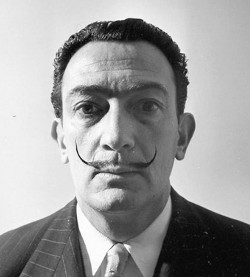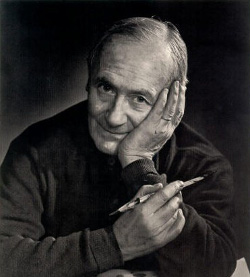Self confidence and Surrealism
From a very young age Alberto Giacometti was confident in his own artistic ability:
"I thought I could copy absolutely anything, and that I understood it better than anybody else". He became interested in a wide variety of artistic styles including Italo-Byzantine, primitive and prehistoric art, as well as Cubism and Futurism. In 1922 he went to Paris to study under the sculptor Bourdelle at the Ecole de la Grande Chaumiére.During 1928 Giacometti exhibited at the Galerie Jeanne Bucher which brought him into contact with the Paris avante-garde, in particular Masson. He signed a contract with Pierre Loeb, then the Surrealists preferred dealer and this was followed by an invitation to join the movement. Giacometti joined the Surrealists in 1929 and his work was characterised by symbolic representations of the mystery, eroticism and violent psychodramas typical of Surrealism. Much of his work at this time was influenced by primitive sculpture seen at the Musee de l'homme. However, he broke up with them only six years later as he started to use models instead of his imagination. That being so, one can see in the sculpture
Nose, an element of the fantastic still remained, with it's huge proboscis.
Small forms
A striking feature of Giacometti paintings and sculptures is the form. That is slender or small features such as heads or bodies. As Giacometti himself described:
"I could not understand it. All my statues ended up one centimeter high. One touch more and hop! the statue vanishes.". He also describes an incident in 1919:
"Once in my father\'s studio, when I was eighteen or nineteen, I was drawing some pears which were on a table - at the usual still-life distance. But they kept getting smaller and smaller. I\'d begin again, and they'd always go back to exactly the same size. My father got irritated and said: 'Now start doing them as they are, as you see them. And he corrected them to life-size. I tried to do them like that, but I couldn\'t help rubbing out; so I rubbed them out, and half an hour later my pears were exactly as small to the millimetre as the first ones.". Giacometti's saw contemporary sculpture's main problem as being how to re-create the human face. Breton was shocked by this:"
Everyone knows what a head is!" he exclaimed. He saw the face as an indivisible whole, a unity, and saw art as conversely divisible parts in whatever medium. He tried to reduce the matter to it's furthest limits and by so doing reducing the human image to it's proper unity.He said:"
Finally, trying to make something of them, I began to work from memory, primarily in order to know what had stayed with me from all this work (all that time I also drew and painted a bit, almost always from life). "But o my horror, when I tried to remember what I had seen, the sculptures became smaller and smaller, they seemed like children, and although I hated these little things and tried again and again I always ended up at the same point."
A large figure seemed wrong to me and a little one just as bad; they became so tiny that often with a final cut of the knife, they would disappear into dust. But heads and figures only seemed to have any truth when they were minuscule.""All that changed a bit in 1945 with drawing. It led me to want to make larger figures, but to my surprise, they only seemed likenesses if they were long and thin."
Death
In the 1960s Giacometti's health began to fail. In 1963 he underwent an operation for cancer of the stomach (he made thecuriously characteristic remark
: 'The strange thing is - as a sickness I always wanted to have this one.'). The cancer did not recur, but in 1965 heart disease and chronic bronchitis were diagnosed. Giacometti died in June 1966 at the Kantonsspital in Chur, Switzerland.
Alberto Giacometti Book Results






